-
Content count
1,738 -
Joined
-
Last visited
-
Days Won
3
Posts posted by serverandenforcer
-
-
Okay, slow down and re-explain it in a more slower, concise format, please.O.K. Combat landings and take-offs: A combat landing is when the aircraft lands at a really fast speed to get on the ground A.S.A.P. Why? Because they are landing in a combat zone (for example, Allied airbases in Iraq). In the theater of operation, there are always insurgents or "bad guys" nearby your airbase, waiting to get a good shot off with their RPGs to take out an aircraft. Because of this threat, aircraft have to land at a high rate of speed. If you have the flaps down too much, you'll be getting more lift than what you want, making it difficult to land fast. Of course you will also start to slow down as well - probably slower than what you would be comfortable with because you are now a nice juicy target for the insurgents. Same thing applies with combat take-offs. You want to stay low as much as possible until you have reached a fast enough speed so that when you pull up, you zooooooom up into the sky like a freaken rocket - hence forth making it very difficult for an insurgent to fire a rocket and hit you with it. When I was over in Iraq, I've seen C-17s and C-130s do this all the time, they get about 100 - 200 ft off the ground (A.S.A.P.) and then stay level as long as possible. Usually at the end of the runways (which was also at the perimeter of the base) they pull up really hard gaing a couple thousand feet very quickly. Now talk about a deafening sound when those suckers fly over you!
Now, in a traditional take-off and landing, you won't be taking off and landing that way. Everything is by the book, super safety stuff. So you will be taking off with enough flaps to get you airborn and to maintain a decent rate of climb. Same thing with landing in the traditional/non combat way. Your approach will be nice and slow (obviously above stall speed - but just enough to give you plenty of time to make minor corrections to have that perfect landing). So then, you will have your flaps completely down (actually, it's a gradual procession [putting your flaps down] to maintain a certain rate of decent, speed, and level flight on your stages of approach). This is how I do it (in a very rough and basic sketch). 5 miles to the runway, flaps are at 25%, airspeed is 250 knots, maintain rate of decent of 500 ft per minute. 3 miles to the runway, flaps at 50%, airspeed 200 knots, maintain rate of decent of 500 ft per minute, and I start lowering the landing gear. 1 1/2 miles to the runway, flaps at 75%, airspeed at 160 knots, maintain rate of decent of 500 ft per minute. 3/4 of a mile to the runway, flaps at 100%, airspeed at 140 knots, speed brake deployed, and fluctuating the power a bit to keep airspeed up with a rate of decent of 500 ft per minute. I usually fly the nose pointed at the runway, untill I start passing over it. Then I flare it a bit and drop all power, which gives me that nice feather like touch down. Apply wheel brakes untill you're at a safe and slow speed for taxing.
Combat landings: this is how I do it: At 5 miles to the runway, maintain altitude under 500 ft / above 100 ft, come in at 200 - 250 knots, flaps at 50% all the way to about 1/4 of a mile from the runway. Then I drop the power, lower the gear, keep my nose up, and deploy a couple flares and chaff for counter measures against any possible launches against my aircraft. I should be doing about 170 knots once I pass over the runway (depending on aircraft, speed may be higher or lower). I then deploy the speed brakes, slowing to about 140 knots, hit the runway with a purpouse and plow through those wheel brakes (if this was a transport, I'd be using full thrust reversers as well).
Combat take-offs (for a fighter jet): Full burners. At 130 knots, pull up to above 100 ft, but not over 200 ft. At 260 knots, you should be passing over the other end of the runway (and the base perimeter). At this point you pull up hard to get at least 1,000 ft, if not 2,000 ft, and level off.
In the real world C-130, on my way back from Kirkuk, Iraq, we were going to land at Baghdad. At around 10,000 ft, we had a rocket fired at us and we nose dived to about 500 ft (I had a nice window seat to see all the action
 ) and we maintained that altitude all the way to the base.
) and we maintained that altitude all the way to the base. -
This is just a rehtorical question. Why can't wingman think before firing an IRM to make sure that it is actually locked on to an enemy aircraft and not YOURS!? GRRRRRRR!!!!!!!!!!!!!!!!!!!!!!!!!!!!! Obviously, even without the aid of the latest HUD features, if I'm trying to lock up an IRM to a bandit, and one of my guys is directly in front o me, I would try to get into a better postion so that I wouldn't lock him up back accident. Too bad the AI in these aircrafts really aren't all that intellegent.
-
Why would you need more than three setting anyways?Well, if you would be doing combat landings, you would be comming in pretty hot so you wont get shot down by hodgies with RPGs hidding out a klick or two from the base perimeter (and I know what that is like - got shot at by ground based rockets in a C-130 comming into Baghdad Airport on my way back home from Kirkuk). So a full flap setting would provide too much lift for your approach. Same with take-offs 'cause you don't want to instantly go high in the sky straight off the runway at a slow speed, making yourself a really easy target for insurgents on the ground with RPGs (do know how embarassing that would be for a fighter pilot to get shot down by RPGs - over his home turf?) You want to be able to get enough lift to get off the ground and clear the watch towers at the end of the runway (where the perimeter fence is at - I've been in those towers BTW) and still maintain a fast speed. Then you point the craft up into that deep blue beauty at close to 300 knots as you pass over the base perimeter. BTW, fighter jets don't use flaps for combat takeoffs - well atleast not to my knowledge. Now when taking off and landing in the states or in a safe zone, you won't be doing combat take-offs or landings. You'll be doing those things nice and safely. So then you will be using more flaps to get the job done, cause you're not in a hurry to get anywhere. And you know how hard the military is trying to conserver on jet fuel consumption.

-
Question, can this be used to other airfields for different maps. If so, what needs to be changed, if any changes are needed at all.
-
So what do I change the file name to if I want to use it in WOE? Is it EUROPE_AIRFIELD"X" or something else?
DISREGARD THIS POST
-
IB,sometimes it will fail based on percentage of reliability. Shoot again.........
also be sure you are actually within parameters as pointed at the target with a bit of lead.
What about head to head, 'cause I've have this problem as well. Would be nice to have a TTI timer so we know in the cockpit if the missile is dead or not, 'cause you lose visual contact when that sucker goes out really far.

-
Python, I didn't have to adjust anything. It takes a lot of movement to get the X and Y axis to start working. I just found out by accident when I stood up to adjust my seat and noticed the Y axis movement. Then I went exploring to see if the X axis would work as well and it did. But if it's not working for you, then you need to go to the Track IR menu and do some twiddeling in there. There is no roll axis in SFP1, WOV, and WOE. Not until a patch comes out to support it.
-
Well, I guess I don't have to worry about making those two models now.
-
the last two are to peek up or down (adjusting seat height) and peek left or right (to see around the dashboard of the cockpit).
-
Well that answers my question in why there was a gap between the F-16 and the F-18. Was wondering what had ever happened to the F-17. Didn't know it was originally going to be the Hornet its self. Just goes to show my limited knowledge on military aircraft. BTW... was there ever an F-10, F-11, F-12, and F-13? I know there is a mystery about the gap between F-18 and F-22 as well.
-
As I understand it... All three Talons are "slightly" different. Talon-1 appears to be the pinical of the design, while Talon-2 and -3 are older ones.I noticed some differences too between this model and the movie model other than what Shin_kazama pointed out. But I'm not going to say what they are because, 1.) you've worke really hard on this model as obvious as it is, and 2.) I'm just happy to get a Talon that looks this good. So I say carry on with what you're doing.
-
Lots of detail is always good- unless it kills your machine.Great work!

Based on Skelator56's pics, it doesn't seem like too many polys will be a problem, but how will you simulate the panel?
We'll cross that bridge when we get there. Don't worry, I'm not going to release this thing until this jet can simulate the real deal as best as possible.
-
-
Please do, cause I already modelled them in (the LEFs). Well, this will definately cut some time since I don't have to do those speed brakes. I guess I'll work on the pit then. Been looking forward to do that. BTW, in regards to the LEFs, do they rotate downwards, or do they "slide 'n roll" out from a sheath inside the main wing?
-
-
Just like USAFMTL said, you can't compare the 2 because they are totally different sims. However, I will say this, they both set the bar for the type of sims that they are. I have bothe SFP1/WOV/WOE and LOMAC. LOMAC has stunning graphics that make it ultra realistic. However, it is not system friendly or is it user friendly (in regards to modding - although, I've been out of the loop for LOAC mods for quite some time). You need a high end system to get the most out of LOMAC. For how system friendly WOV/WOE is, it has some very impressive graphics. Not to mention that you can easily add mods to it that really don't cause any conflicts with the game's operation, nor limit to how much you can modify it. It currently might not be as realistic in operating a fighter jet as LOMAC is, but it will only be a matter of time until the game evolves to have such realism from the mods that the online community is pooring out for it - which will make it much more enjoyable to the aviation enthusiast. The bottom line is, it all depends on what you are looking ot get out of in a combat fighter simulator. If you really want to feel like you operating a F-15 over what you can mistakenly assume to be the real mother earth, then go for LOMAC. If you want to enjoy flying a fighter jet and experience a really decent campaign story, in where you never repeat the same scenario (incase you have to do the mission over again), go for WOV/WOE. You want to know what game I play the most? WOV/WOE. The only time I playe LOMAC was after I first installed it on to my computer.
-
You have to take into account that there is a certain percentage of AB thrust that you can apply. It's not like in an arcade game where it just kicks in at 100% of full power. Each aircraft has a unique military power limit, ranging from 70% to 80% of total thrust. After that, you enter the AB stage of thrust, where you can apply anywhere from 1% of AB power to 100% of AB power ontop of your full military power (full throttle without burners). However, you're not going to see 1% AB thrust on your screen. Basically, there is no way to calibrate your joystick the way you want, because it's a game issue. You can however mess around with the .ini files of the aircraft and tweak stuff that way to have it work the way you want - but it won't be realistic. Believe it or not, this is how it's done in the real world with burners. You can only go up so far on the throttle before those babys kick in. Hope this makes sense.
-
This will be my last update for the night. Weapon bays complete. Just need the hinges for the doors and pylon mounts - which will be taken care of during the final construction phase of the aircraft. Next to do will be the speed brakes and puting a dashboard and seat into that cockpit with the roll bar. After that... ugh... landing gears. Once that is taken care of, I'll be doing the asymetrical cosmetic features, such as the cannon, and some other feature on the opposite side of the aircraft. Here are the picks of the weapons and landing gear bays (don't worry, doors are there, I have them hidden so you can see the bays).
-
-
O.K., here are 2 pics. One shows the landing doors hidden, and one shows them unhidden so that you guys can see what I actually did so far with the gear bays. Yes, I know I forgot to make a lip for the front bays. I will fix that later on. Also, if any of you have some advice on what it actually looks like (cause I couldn't find any reference material to show exactly what the inside of the bays look like) that would be very helpful. I have many save of many versions of this plane. So it is easy for me to go back and re-do some stuff the right way.
-
Just some shots to show the progress. As you can tell, I got the Laser Designator on the bottom section of the nose and some kind of avionics hub in front of the cockpit. Now as you can see, the smoothig doesn't look real clean on the bottom side of the nose and the rear area of the main sings. That's because of the cuts made for the front gear doors and the flaps. I also did some more shape refinement on the ventral side of the fuselage (probably won't be able to tell from the shots).
-
Well, due to my lack of experience with max, there are some features that I'm not aware of in regards to boolean operations. So what I will say may seem like old information to a lot of you. Thanks to wpnssgt, he explained to me that my problem could be simply solved by clicking on the "cap holes" modifier. This will fill in those "missing polygons when you do a boolean subtract operation. However, you have to connect the appropriate vertices because it won't fill in those missing polygons very nicely. He also explained that this action should be done after the model is totally complete and that all segments (i.e. wing, nose, fuselage, etc...) have been detached. Basically, you don't want to have a "whole" model. Things need to be in pieces so that the aircraft can operate correctly in the game. So far, I got all control surfaces and the front landing gear doors finished. Now I need to work on the rear landing gear doors, the speed brake, the weapons bay, the hinges to all of the moving parts, the actuall landing gears, completely model in the canopy (it's just an extrusion off of the fuselage right now), and build the cockpit. I believe it's safe to say that there is probably even more stuff I have to do to the model... oh yeah, the cannon and some other cosmetic features. This is one of the most involved models I've ever had to deal with. Now I know why it takes so long for these things to be built.
-
The problems that I had encountered in the modeling process have been resolved and contruction has resumed.
-
Well I tried what you said and it still didn't solve the problem. Perhaps I didn't build this thing right. I guess I'll have to try hand cutting it. Ugh, this is going to take a lot longer than I originally anticipated.


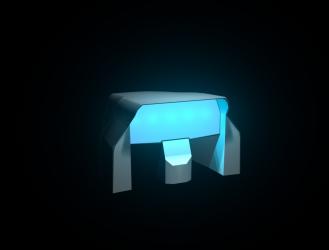

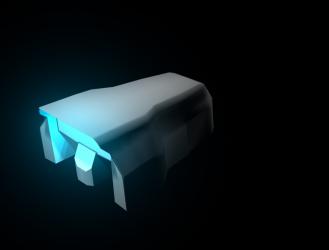
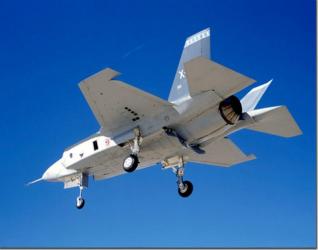




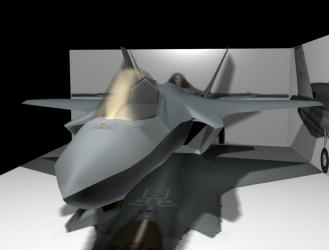
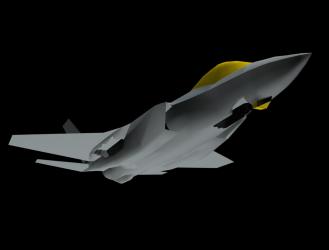

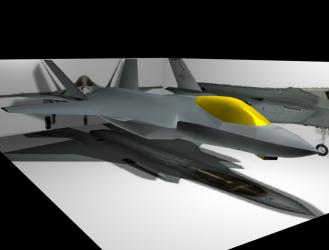
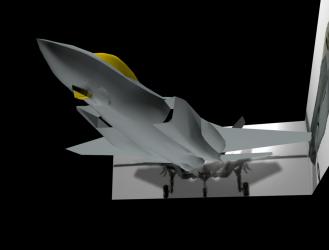
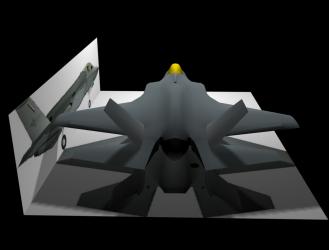
Multiple Flap Settings
in Thirdwire: Strike Fighters 1 Series - Mods/Skinning Discussion
Posted
It was a manpad that fired at us. Totally forgot what those things were called.